
EARLY VERDICT
While several questions remain about the Huawei Mate X, there’s something incredibly futuristic and impressive about this foldable phone. Huawei and Samsung are duking it out to be first with a mainstream ‘folder’, and both are bringing something cool and unique to the table.
FOR
- Amazing innovation
- High spec
AGAINST
- Slight ridge in middle
- Very expensive
Most of us only got to see the Samsung Galaxy Fold from a distance, with only Samsung reps enjoying the privilege of actually getting hands-on with the phone. We were excited at the progress the Fold represented, but we couldn’t let ourselves get too excited – after all, we didn’t get to play with it.
It looked like that was the way Huawei’s foldable Mate X launch was going as well – we’d get to see a phone that looked impressive, but only at a distance. Until, that is, a briefing with Huawei CEO Richard Yu led to a surprise hands-on opportunity with the 5G 2-in-1 foldable phone.
Price and availability

Huawei’s Mate X dropped with gusto at MWC 2019, and with a price tag that makes the Galaxy Fold look almost affordable; Huawei, once synonymous with budget devices, is most definitely getting comfortable in the big leagues.
The Mate X costs €2,299, which converts to about $2,600, £2,000, AU$4,770 with 512GB of internal storage and 8GB of RAM, and Huawei has hinted there will be other variants. The phone will launch in the UK on EE, Three and Vodafone this year.
Design and screen
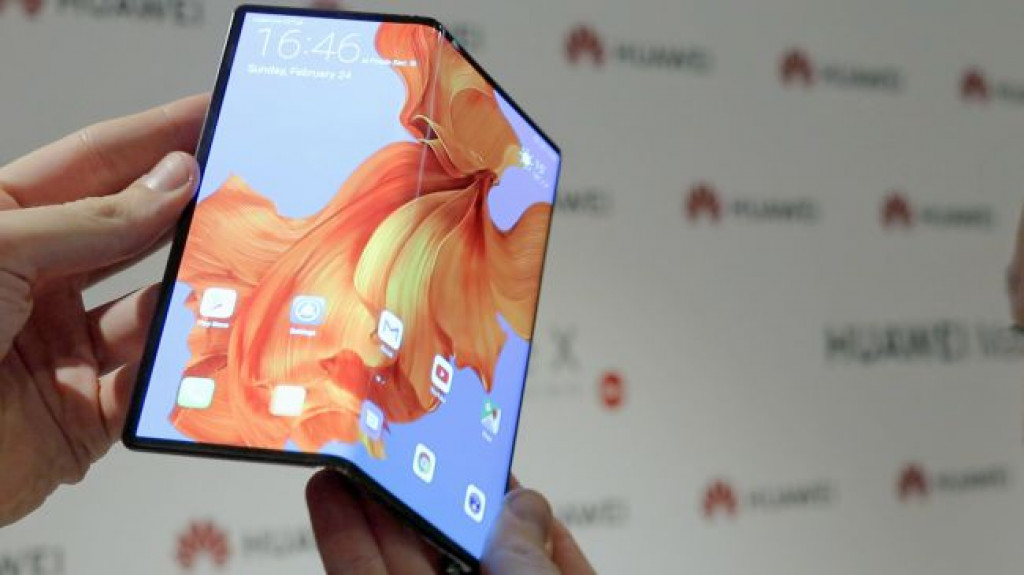
One thing that wasn’t made clear in our initial briefing on the Mate X was how the clasp system used to keep the screen firmly flush when the phone is in its folded ‘phone state’ worked.
It turns out that a button on the back of the phone can be pressed, releasing the back portion of the display so it can be unfurled into an 8-inch tablet.
The front of the phone really is all-screen – 6.6-inches of it, in stark contrast to the Samsung Galaxy Fold’s humble 4.6-inch external display combined with beefy bezels.
Turn the phone around and its back portion – the rest of the display, creates a secondary 6.4-inch screen that’s thinner – this could be cool for watching 21:9 movies, activating the smallest display and potentially saving battery.
The reason this could save battery comes down to the Mate X’s screen technology. As this is an OLED display individual pixels can be fired up, with unused pixels remaining pitch black; this is in contrast to LCD displays that require the whole panel – all the pixels – to be illuminated simultaneously. Huawei capitalizes on this power-saving feature innate to OLED tech in the core design of its Mate X.
Back to that design, and to the left of the rear screen is a vertical bar. This houses the brains of the operation, from the triple-camera system – which Huawei was very tight-lipped about – through to the power button/fingerprint scanner combo, and at the base, the USB-C port for charging. The sidebar is also where the internals are squished into – more on that later.
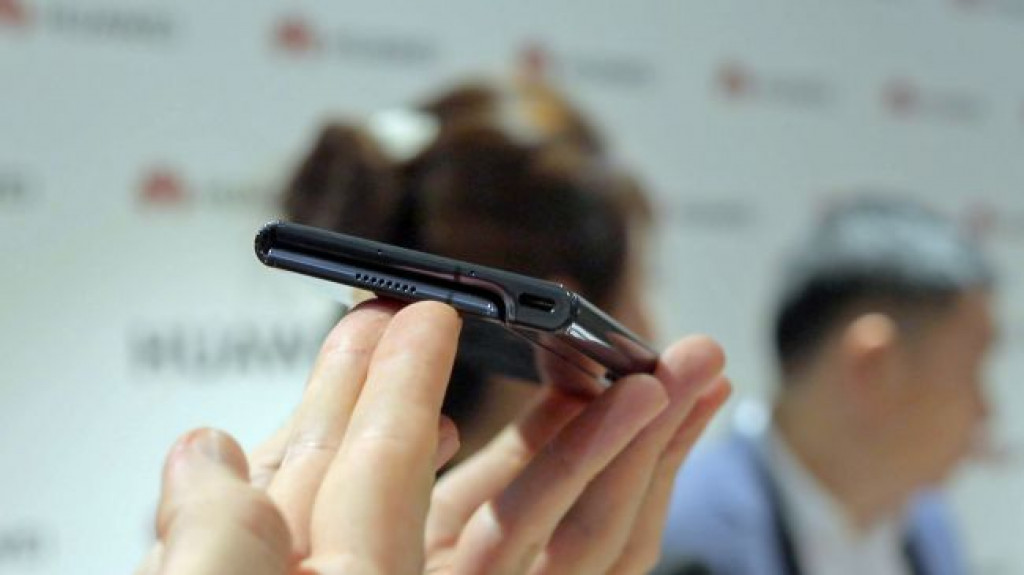
Moving parts scare us – especially when they’re in gadgets that cost over $2,000 – but Huawei wants us to rest easy.
The Mate X screen has endured 100,000 folds in lab-condition stress tests, and the company also showed us how a case it’s worked on should keep it protected; but most importantly, it feels like a solid bit of kit, despite how thin it is.
A bigger fear for us is that the clasp that keeps the phone flush will wear out. Huawei mentioned to us that the clasp is needed for the completely flush fold at this stage, but perhaps in the next evolution of its proprietary Falcon Wing hinge system it’ll be able to lock in place clasp-free.

Another key concern we have surrounding durability, especially with a wraparound phone like this, is scratch-resistance, or lack thereof. Flexible displays are plastic, which scratches more readily than glass – remember the Moto Z Force?
In this respect there’s a good chance the Samsung Galaxy Fold will be hardier than the Mate X, with less exposed flexible display and a glass outer screen.
Camera

We know very little about the camera on the Mate X, other than that it’s a triple-module system. We weren’t allowed to open the camera app and try it out ourselves, but we did see a few tricks in action, and they seemed to be equal parts gimmicky and useful.
First off, there’s no front camera, just a primary triple camera around the back. All’s not lost for you Instagram stars and starlets though, as the rear screen doubles up as a viewfinder, which should actually make taking selfies an even better experience, given the fact that rear cameras are almost always superior in quality to selfie shooters.
The second screen can also be used to create a dual viewfinder – one either side of the phone. This enables you to see a preview when someone’s taking your picture with the Mate X, adding a playful party trick to this pricey powerhouse.
There are many reasons Huawei might have been so tight-lipped about the camera specs. On the one hand, the camera may contain tech of the future – something the brand wants to announce with its upcoming Huawei P30 smartphone, expected at the end of March.
Alternatively, the Mate X may not have a best-in-class camera given the potential space limitations, while another possibility is that Huawei hasn’t ironed out the details when it comes to imaging on this thing, and doesn’t want to commit before it’s ready to bring it to market.
This is all guesswork of course, and with any luck Huawei will shine a light on things sooner than later.
Battery and specs
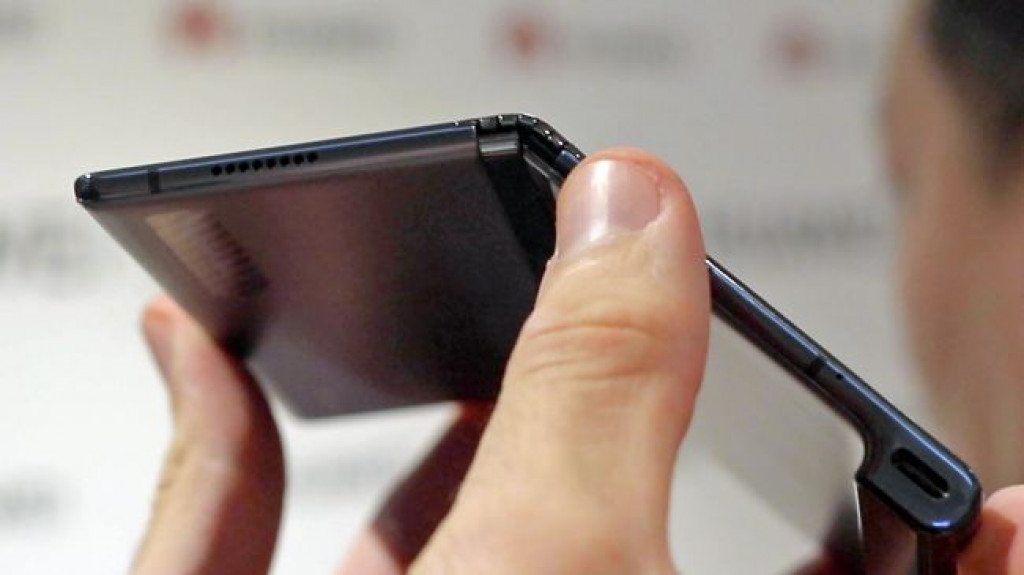
One thing Huawei did want to talk about was power, because there’s a massive battery inside the Mate X – actually there are two batteries, combining for a total 4,500mAh.
It’s packing more juice than the Samsung Galaxy Fold, but the Mate X also has a bigger screen when in both phone and tablet orientations, so is likely more power-hungry.
Huawei’s 55W SuperCharge tech, which debuts on the Mate X, not only surpasses the 40W charging in the Huawei Mate 20 Pro, but it can also power up the Mate X to 85% from 0% in just 30 minutes.
Powered by a Kirin 980 processor coupled with a Balong 5000 5G modem, the phone doesn’t just charge quickly, it ‘5Gs’ quickly too, taking as little as three seconds to download a 1GB movie.
While we won’t be seeing those speeds when the phone drops in the middle of this year, as networks will unlikely support such zippy download rates, numbers like that do give us some comfort that the incredibly expensive Mate X is nicely future-proofed from a data transfer speed point of view.
There’s also 512GB storage and support for Nano Memory, Huawei’s proprietary storage card that goes up to 256GB.
How it works
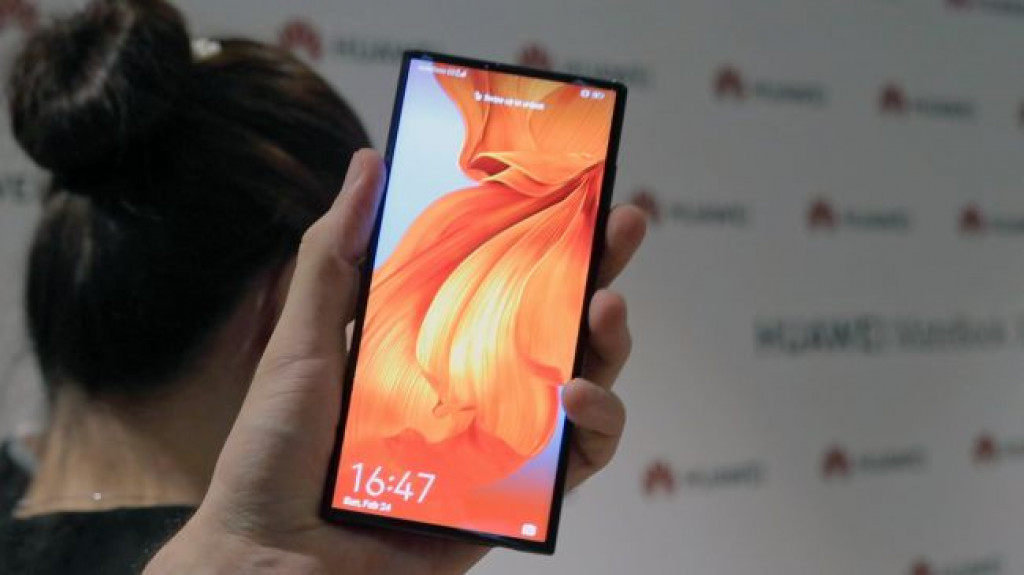
The Mate X runs a customized version of Android, and, ever aware of folds and unfolds, the interface optimizes itself for tablet or phone orientation in milliseconds. Our experience with the UI was very smooth, especially considering that the phone is some way off actually retailing.
EMUI, Huawei’s custom skin that sits atop Android, is likely at the heart of the experience, and there were some entirely new features that shone through, specifically around split-screen multitasking, with the OS oriented for the bigger, almost square tablet display really well.
Huawei’s CEO Richard Yu mentioned that the tablet would be ideally suited to mouse and keyboard accessorizing for document editing, potentially even hinting at an EMUI Desktop-style experience down the line – or, dare we say it, full Windows?
Early verdict
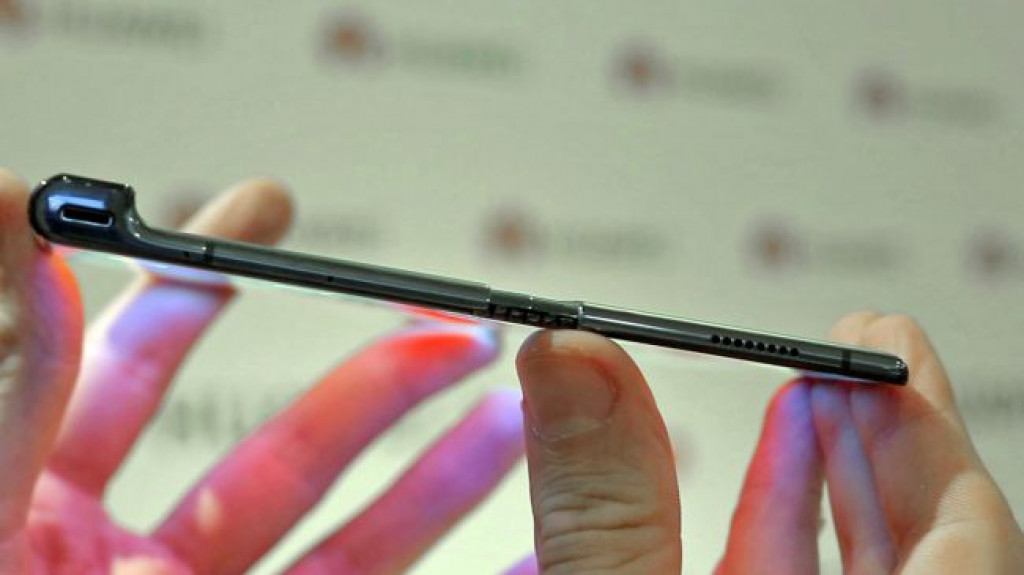
While an alternative operating system is wild speculation, after spending some time with the Mate X the speculation feels a bit less wild.
Here we have a well constructed, foldable phone, incredibly thin and with minimal bezel. What’s more, it features a design we can imagine pulling out of our pocket and turning into a tablet for some reading on the go, without looking ridiculous.
Of course, there are some red flags, specifically around durability and moving parts, and nothing will dispel these other than a month or two of real-world use.
But while Samsung’s Galaxy Fold looks like a V0 at the moment, the Huawei Mate X feels very much like a V1 – and most importantly, we could touch it.
Source: techradar.com









































